Lecture
It was not my idea to find out how useful emotions can be in assessing credibility. The question arose about forty years ago when I first started teaching classes with trainee psychiatrists at our university. Although they listened with interest to the stories of my research, which allowed us to establish the fact of the universality of expressions of emotions, much more they wanted to know about the guiding principles of decision making in difficult situations that they encountered at work: for example, when a patient taken to hospital in a state of severe depression , asks to let him go home for a day, claiming that he is feeling better and no longer thinking about suicide, how can one determine whether he is telling the truth? Can a patient lie in order to escape from the hospital and take his own life? Unfortunately, this happened. But if the patient really feels better, then one day spent at home can be an important step towards returning to normal life.
I had no idea what I should look for. Are there any special signs in the facial expression or gestures of a person indicating that the emotion is fake? Can anyone other than a specially trained actor intentionally create an expression that would look sincere without being such? Are people able to deliberately suppress any outward manifestations of their feelings, especially when these emotions are experienced very intensively? Is there a way to see the true emotion in the guise of a mock emotion?
I began with a detailed study of one of the films from my film library (at that time there was no video yet, and sound films were the only means of recording expressions and gestures). Before that, I was filming interviews with mentally ill people: first when they were admitted to psychiatric hospitals, then when the staff decided that the patient's condition improved significantly, and finally, a week before the patient was discharged home. As the staff of the hospital informed me, one of the patients admitted that she was not telling the truth during the second interview: she stated that she no longer suffers from depression, and asked to let her go home for the weekend. A few days before she received permission to temporarily return home, she said that she was going to take her own life as soon as she was outside the hospital. Fortunately, I managed to shoot that interview, during which she lied to the doctors.
Mary (this is her unreal name), which by that time was forty-four years old, before her admission to the clinic made three suicide attempts, at each of which she only miraculously survived. The first time, when I watched the footage of me about the intermediate interview, I did not notice any signs that she was lying about her emotions; she smiled a lot, spoke optimistically and looked cheerful. I would believe her; the doctor believed her, too.
My companion Wally Frizen and I took out a multi-speed movie projector for a frame-by-frame study of each of her facial expressions and every gesture both at a very slow speed and at a faster speed. I spent more than a hundred hours repeatedly watching this twelve-minute film, but the result was certainly worth it.
During the interview, the doctor asked Mary about her plans for the future. During a short pause before answering this question, we noticed that an expression of deep suffering ran across Mary's face. It was visible only in two shots, that is, it lasted only 1/12 of a second, and then quickly disappeared under a smile. We looked at this expression over and over; we had no doubt what it meant. On the fixed frame, her true emotion was extremely clear, and then she intentionally hid. As soon as we discovered what to look for while slowly watching a film, we discovered two more very quick expressions of suffering in this film.
Friesen and I called these fast facial movements lasting from 1/25 to 1/5 of a second microexpressions and noted that they provide non-verbal leakage of information about a person’s true feelings. [212] I later found out that psychologists Ernest Haggard and Kenneth Isaacs discovered microexpressions three years earlier than us, but suggested that they are imperceptible in real conditions and are signs of repressed emotions. [213] We found that you can see microexpressions without a slow viewing, if you know what to look for; then we had no idea how easy it would be to teach people to recognize microexpressions on our faces.
We conducted further research on intentionally hidden and intentionally repressed emotions. [214] Research in this area over the past few decades has clearly shown that microexpressions can occur either when conscious hiding of emotions occurs, as is the case with Mary, or when a person does not know what he feels, that is, when emotion repressed as Haggard and Isaacs discovered. It is important to note that micro-expressions look the same in the case of containment, and in the case of suppression of emotions. In itself, a microexpression does not tell us what it is; this should be determined from the context in which it arises, which often requires further questioning. It makes sense to explain here what I mean by context . In different contexts, the same microexpression may have completely different meanings.
In the most general sense, the context is the nature of the colloquial exchange of information. What is this exchange: a first meeting, a casual conversation, a formal interview or an interrogation, during which the person knows that he is suspected of some kind of wrongdoing?
The second context is a relationship history . What became known before the conversation began? What was the nature of previous contacts between the person being evaluated and those who evaluate him? What does each of these people expect from future relationships and how does this relationship see these relationships?
The third context is the order of manifestation . When microexpressions arise: when does a person being evaluated speak or when does he listen?
Finally, the fourth context is compliance . Does the emotion shown in the microexpression correspond to the content of the words uttered by a person, the sound of his voice, his posture and gestures? Does a microexpression appear when a person listens, does it correspond to what the researcher says and what the person being evaluated will say in the future?
Although all four of these contextual factors should be considered in evaluating normal facial expressions, or macroexpressions of emotion, they can be especially helpful when studying microexpressions. They should also be considered in assessing the signs of emotion in the voice, in the position of the body, and in other conscious manifestations of deception.
Most people do not notice micro-expressions that appear during a conversation, when these micro-expressions compete for attention with words, tone of voice and gestures. In addition, we are often distracted by thinking about what we should say, instead of carefully watching the microexpressions on the face of another person. Even when I showed people micro-expressions out of their context - with the sound turned off, if there was no need to give answers, most of the unprepared people reported that they did not notice many of them. We are not very good at observing microexpressions on our own, and when I first tried to teach other people to this, I was extremely surprised at how quickly they learned this skill. After only one hour of training, people can significantly improve their ability to notice microexpressions. I am sure that the most important conditions that allow them to learn so quickly is instant feedback on whether they make their own assessments, regular practice and visual comparison of expressions that are most often confused with each other, in particular anger with disgust and fear with surprise. .
But not all behavioral indicators of deception are emotional. They can be generated both by thinking (cognition) and by feeling (emotions). Since this book is about emotions, I will describe the role of feelings in more detail, but it will also be important for us to learn something about the role of thinking in order to get a complete picture of how truth is assessed. Emotions affect thinking (strong emotions such as fear can prevent us from thinking clearly), and thinking affects emotions (thoughts of capture or the impossibility of proving our alibi will increase fear).
The most obvious cognitive indicator of a possible lie is the contradictions in the story of a person about what he is going to do. However, some contradictions appear in truthful messages, and therefore you should be careful when you assess the truthfulness of a person based only on the contradictions you have identified. Very rarely do people repeat their difficult stories each time in exactly the same way; they usually add or remove some details that they initially forgot or forget when they retell, which creates the appearance of inconsistency in their messages.
Another obvious, but very useful indicator of the unreliability of the information you receive is the insecurity that manifests itself in a person when he answers questions that you think should be answered quickly, of course, if the person is telling the truth. For example, if a wife asks me why yesterday at two o'clock in the afternoon my car was standing in front of one of the luxury hotels, then I should know the answer. Uncertainty will arouse suspicion that I was doing something reprehensible and, not expecting to be noticed, did not prepare a story in advance to cover my actions. On the other hand, the question of who will fight for the presidency in two years can make me answer even more uncertainly, since I never considered myself a political seer and thought little about what the answer to this question could be, but such uncertainty should not cause suspicion.
You should also consider two more factors before interpreting any behavior, and not just uncertain answers, as a symptom of possible lies. First, changes in behavior are important, especially when they change the topic of discussion. For example, if I always show indecision when I speak or when I try to recall past events, then my indecision should not be considered as a sign of an attempt to deceive, unless it suddenly begins to differ sharply from my indecision, which manifested itself at the beginning of the conversation. If it is noticeably enhanced, then this may indicate my attempts to invent a story on the move to hide something important; if indecision abruptly weakens, then this may indicate that I have a previously prepared answer. Secondly, even obvious uncertainty in those cases when the answer to the question should not cause difficulties, can be the result of completely natural processes. Even if I were not two-faced, I could still show uncertainty, thinking about why my wife might be suspicious; I could even think whether to offer her to speak on this topic in more detail.
Since contradictions and indecisiveness may indicate the presence of reflections that are not related to deception, I call these behavioral symptoms hot spots rather than signals of lies. They mark the moments when you need more information. Alternative explanations of why a person has such behavior should be excluded before you can conclude that a change in behavior is evidence of a lie.
Only Pinocchio had an obvious signal, appearing whenever he lied. We, unlike him, at best, have hot spots. Even if I showed a microexpression of fear, when my spouse asked a question about a car parked in front of the hotel, it would still be a hot spot. I might be afraid that my wife would not believe me, or I might be worried about the strength of our marriage, if she had any doubts about my honesty. I could even hide my fear, because I don’t want her to know that I have such thoughts about her and our marriage, even if I didn’t do anything wrong. Only one of the many possibilities is that I might be afraid to be caught in adultery and try to hide my fear so that my wife would not notice. Since this is just a hot spot, the wife would be wise enough to ask a few questions and get more information to clarify what caused the hidden emotion.
Signs of thinking that occur under the influence of the minute are manifested in the voice and gestures of a person. There are certain memory problems that usually do not occur when people are telling the truth. At the same time lying people can demonstrate a very good memory for details. John Dean, an adviser to President Nixon, described in his book how carefully he prepared extremely detailed reports on the events that took place, believing that the inclusion of many details would make his reports look more trustworthy. [215] If those who listened to him knew about the results of memory studies, they would demonstrate a completely opposite reaction, since the memory of the smallest details of events that were not recorded at the time of their occurrence is extremely rare.
In the book "The Psychology of Lies," I describe these hot spots and try to answer questions about why people lie and when it is possible to estimate the truthfulness of a person's intentions with the greatest and least probabilities by the manner of his behavior. [216] My colleague, John Yully, conducted an impressive study of cognitive hot spots. [217]
If a person lies about what he feels at the moment, just as Mary lied about her mental state, then her lies usually consist of one or two elements: a hidden emotion and her fabricated cover, or mask. Masks appear for two reasons. First, because the emotion is easier to hide with the expression of another emotion, and not by giving the face a neutral expression. Secondly, a situation that motivates a lie often requires not just hiding some feelings (for example, Mary’s suffering), but also imitating others (for example, feigned cheerfulness of Mary). A smile is the most commonly used mask, because positive behaviors that conceal unpleasant feelings are required in most social situations, but any emotion can be disguised by another emotion, for example, when anger is used to disguise fear, as mentioned in section 6.
Facial expressions can produce a fake emotion in many ways. One of the signs of fake is the asymmetry of facial expression. Fabricated expressions are more asymmetric than spontaneous sincere expressions, although this distinction is usually insignificant and difficult to detect without proper training. Asymmetry of expression can be measured using the "Facial Coding System" ( FACS ).
As noted earlier, the great French neuropathologist Duchenne de Boulogne first suggested that the absence of muscle contractions caused by emotions, which most people are unable to perform intentionally, "exposes an unfaithful friend." [218] The absence of such involuntary movements suggests that the expression may not be sincere, but fabricated. In the case of a smile, the lack of movement of the outer part of the circular muscles of the eye ( orbicularis oculi pars lateralis - as it sounds in Latin or is described in AU 6 in terms of FACS ) makes it possible to distinguish a fake smile from a sincere one. If the smile is weak or moderate, then it is not difficult to determine the absence of this movement, because it does not appear “chicken legs”, and the cheeks do not rise under the influence of muscle contraction, reducing the degree of opening the eyes. (Take a look to compare, click on pictures of A & B)
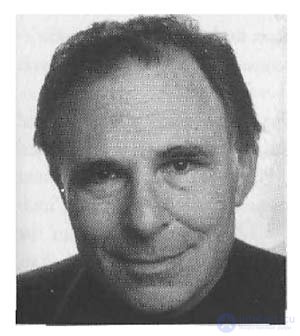
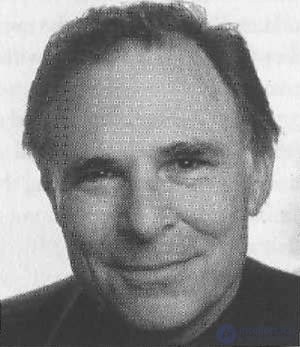
On the other hand, a deliberately made wide smile will cause all these signs to appear, making it difficult to recognize a sham expression; therefore, you should look for much more subtle symptoms: a very slight lowering of the eyebrows and skin folds between the eyebrows and the upper eyelids. (Take a look at the differences between images C and D)
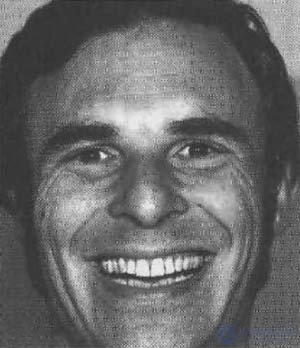
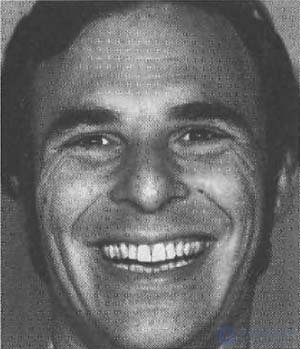
This distinction is difficult to recognize, and most of the time we remain deceived by wide, feigned smiles, which for this reason are often used as a mask.
Other emotions include their own "branded" muscle contractions that are difficult to reproduce intentionally. Feigned sadness or grief can be found due to the fact that they do not imply raising the inner corners of the eyebrows (which can be seen in the pictures I and K).


Feigned fear is likely to be expressed without eyebrows raised and brought together (shown in Figure 3).
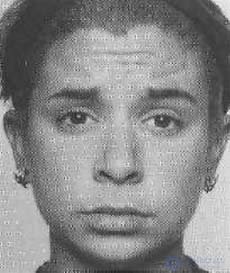
The expression of feigned anger is not likely to be accompanied by the appearance of strained red lips (shown in M and H).

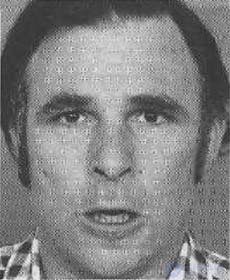
However, there is no movement of the facial muscles that would be difficult to accomplish intentionally in order to express disgust or contempt. Thus, the expression of these emotions does not provide for any movements, the absence of which would be suspicious.
The third way to recognize imitation is to analyze the temporal characteristics of the expression of emotion . Expressions appearing and disappearing very sharply should be suspicious, unless the context of the conversation itself implies such quick switchings. Similarly, phrases that appear and disappear gradually should also follow the course of the conversation in order to look believable. (This question of consistency was also considered by us earlier.)
Ложь об эмоциях помимо придания особых черт поддельным выражениям лица может порождать микровыражения, раскрывающие утаиваемую эмоцию, или давать утечку информации об испытываемой эмоции, скрываемой под маской. Например, улыбка не влияет на верхние веки, брови и морщины на лбу, поэтому эмоции, маскируемые с помощью улыбки, могут по–прежнему появляться в верхней части лица. Вы можете видеть эти микровыражения в верхней части лица, появляющиеся при страхе (снимок К), гневе (снимок Д), удивлении (снимок И) и печали (снимок У).
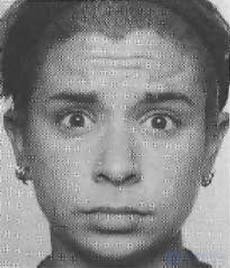
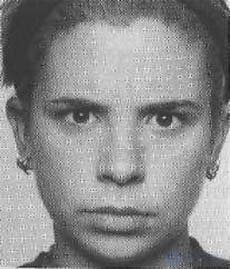

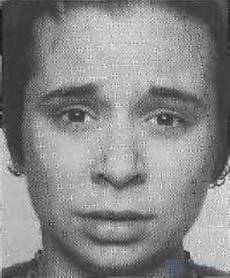
Until now, I have focused on how to detect hidden or fake emotions. Of course, people often lie not about their feelings, but about their actions, plans, thoughts, or values. But even such manifestations of lies can give rise to identifiable hot spots of emotion, if a person experiences some feelings regarding his lies. The three emotions most often experienced by lying people are fear, guilt, and, oddly, pleasure.
Fear of being caught in a lie is the most typical emotion experienced by a lying person. But fear arises only when the stakes are high enough, that is, when the lying one is sure that the reward that can be received is high and the punishment that must be avoided is serious. But even in this case, not all liars are afraid of possible exposure. If a person to whom a lie is addressed is known for his gullibility, or if a liar in the past constantly successfully deceived this person, then it is unlikely that the liar will feel or show fear.
Guilt is another emotion that can be experienced by a liar. Its occurrence is unlikely when a lie is sanctioned, such as the lie of an undercover police agent, or a spy sent from another country, or a seller openly encouraged by the authorities to present the product as it really is not. If a lie is not sanctioned or when there is ambiguity about whether there is an obligation to be truthful, then a lie can cause a liar to feel guilty, especially when the person to whom the lie is addressed cannot be considered dishonest or unfair and when the liar and the victim of his deception share common values and expect to maintain relationships in the future.
Another emotion accompanying a lie is what I call the pleasure of deception . It represents the sheer pleasure of taking the risk of control over another person. Contempt, excitement and pleasure - all these three emotions can be present in the pleasure of deception. This emotion is difficult to restrain, often it stimulates boasting, outstanding lie. The pleasure of deception arises, most likely, when it is difficult to fool a person to whom a lie is addressed and when there are people associated with him who know that the lie was taken for good coin.
These are not all the emotions that can be experienced by using a serious lie - a lie that can have important consequences for the one who is deceiving and for the one who is being deceived. A lying person may be angry with a person to whom a lie is addressed for many reasons, but perhaps he considers it necessary to hide his anger in order for the lie to reach its goal. In a similar way, a lying one may experience contempt for the one he is deceiving. Or he may experience both of these emotions towards another person or himself because of the need to resort to lies.
Before moving on, we need to get acquainted with three very important warnings. Earlier, I have already said that there are no signs of lies as such, but there are only so-called hot spots. Emotions that do not fit the context can be hot spots, but emotions can arise for various reasons, not just because of lies. I also stressed that the signals about emotions do not tell us what caused these emotions. We risk making Othello's mistake by making hasty conclusions that the observed emotion is caused by a lie, without considering other factors that could bring this emotion into action. No matter how tempting it was to draw such conclusions, we must endure uncertainty until we can gather more information to be sure that the hot spot was caused by a lie, and not by some other trigger.
In a situation where a person knows that his behavior is being evaluated, the performance of an assessment itself may increase the likelihood that he will show fear of exposing his lies, sometimes he who makes an assessment can help the truthful person to stop being afraid of the possibility of causing distrust. When I, together with my colleague Mark Frank, conducted experiments in which our subjects lied or spoke the truth - in some cases about their political convictions, in other cases about whether they appropriated other people's money, we acted that way. [219] Before starting to interview the subjects, I picked up the book "The Psychology of Lies" and informed them that I was the author. I am a lie expert, I told them; if you lie, I will convict you of this (to increase the fear of being convicted of lying to those who were going to lie), and if you are truthful, I will definitely find out about it (to reduce the fear of the possibility that they will not be believed, for those who were going to tell the truth). But even if you are not an expert, you can try to reduce the fear of the truthful person not being believed, emphasizing the fact that you are an open-minded person and do not make biased decisions, but at the same time you will carefully and persistently evaluate everything will tell you, and everything else that you can find out.
Othello's mistake is easiest to understand in the context of fear, since innocent people can, sometimes rightly, be afraid of not being believed. But the error of Othello is possible with reference to any emotion. Guilt feelings can manifest in a truthful person who is willing to feel guilty and express it simply because he is under suspicion. Guilt can also be caused by something that is related to the topic of the discussion, and not necessarily a lie that is relevant to the subject under discussion. Consider, for example, the case of an army sergeant who first discovered the naked dead body of his neighbor, the pretty wife of another sergeant. During interrogations, he strongly denied any involvement in the murder, but three times he could not pass a lie detector test. When the evidence found forced to admit the true murderer of this woman, the sergeant was acquitted. But why did he not pass the polygraph test? The fact is that in the past he constantly had sexual fantasies about the neighbor, and when he saw her naked body, he felt a certain sexual desire for her, even though she was dead. He blamed himself for having experienced such a feeling. Whenever he was asked about her death and how he had discovered the corpse, he felt guilty and this emotion did not allow him to take a polygraph test. Guilt feelings, like any other emotion, can have many causes.
Although I consider it unlikely that an innocent person under suspicion will take pleasure in deception, it can nevertheless occur. I recently consulted a group of policemen from another country on the case of blaming a young man for the murder of his ex-girlfriend. During the interrogation, which was filmed on video, the young man showed various expressions of contempt and other signs of pleasure from deception. However, there was no indication that he could lie, and I appreciated the manifestations of emotions shown during the interrogation as having no decisive significance. He was a drug addict in opposition to our culture, who probably just expressed his arrogant and contemptuous attitude towards the police, a person who was pleased to be led by the investigators, regardless of whether he was guilty or not.
In all such situations, emotions tell us nothing about their sources, and hot spots are not evidence of lies. Hidden emotion in a microexpression or a normal expression of the face, contrary to the spoken words, the sound of a voice or gestures of a person, say only that we need to require additional explanations, and nothing more. It is worth repeating again: hot spots mark points in which we need to get more information for an accurate assessment of the veracity.
Indeed, since micro-expressions appear so quickly - in a flash, if you use the expression of the now popular Malcolm Gladwell from his very interesting book - they can go unnoticed. In this book, titled “Illumination” ( Blink ), Gladwell cites many examples of how expressions arise and assessments are made — almost instantly, based on the consideration of a very short period of behavior, and cites microexpressions as one example. [220] But most people do not notice quick micro-expressions if they are not trained to do so. Just knowing that a hidden emotion really arose is not enough to understand its meaning, especially to make an accurate assessment of a person’s truthfulness. Such an assessment requires a longer observation of the behavior and knowledge of the context.
And finally, one last warning: not everyone who hides or suppresses an emotion shows micro-expressions associated with it. In the course of our study, we found micro-expressions in about half of intentionally lying people. The presence of a microexpression really means something (an emotion exists and it is hidden), but its absence does not say anything about whether a person hides emotion or not. We still do not know why only some people, hiding their emotions, generate microexpressions.
In general, we did not find any behavioral changes that would always be observed in all lying people; That is why lie lies must learn to be attentive to every aspect of behavior, because you can never know in advance how important the information received at the moment will be. This news always discourages television interviewers and newspaper reporters, who find themselves disappointed that I cannot tell them one reliable behavioral indicator of lies. But they simply do not exist. The one who declares the existence of an absolutely reliable signal that another person is lying, or he himself is sincerely mistaken, or is simply a charlatan.
It is even more important to note the following: I do not want to create the impression that most cases of lies are revealed through microexpressions or some other signs of emotional behavior. Sometimes the detection of lies has nothing to do with the behavior of the lying person. A lie may be issued by undisputed evidence of its existence, obtained from other sources, such as reliable testimony or material evidence. Sometimes a liar cannot resist boasting and reveals his secrets to an unreliable person who then betrays a liar. The infamous spy, John Walker, sold to the Soviet Union American technology for producing silent propellers for nuclear submarines. Prior to this, silent screws provided the US with a huge tactical advantage. The Soviets could not determine exactly where the American submarines were hiding, but the noisy Soviet submarines made it possible to pinpoint their location to the ships of the US Navy. Walker was caught not by a polygraph test and was not thoroughly interrogated. He boasted to his wife about how much the Soviets paid him, but he lost sight of the fact that this woman was already divorced with him and could not claim to receive part of these “left-wing” incomes in the form of alimony payments! As a result, she gave it to the US authorities.
Sometimes decision making is entirely based on an assessment of behavior. For example, sometimes criminal cases are transferred to the court (instead of being settled through a plea bargain) in the absence of irrefutable evidence of the guilt or innocence of the accused. The decision on the truth of the evidence is taken by the jury on the basis of their own assessments of what the prosecution and defense witnesses say and how they do it. Members of the jury usually do not maintain constant contact with witnesses and do not have much time to observe the change in their behavior during sharp turns during the trial. Jurors rarely ask clarifying questions when they notice the emergence of hot spots; this is done by lawyers and the judge. And the witnesses know that the truthfulness of their testimony is carefully evaluated and that very much sometimes depends on this assessment.
Nevertheless, there are frequent situations in which the presence of a specialist who can detect the hotspot hot spots is of vital importance. The people who committed the September 11 attacks were repeatedly subjected to face-to-face inspection by visa officers, immigration officials and airport personnel, before they could send hijacked airplanes to the towers of the World Trade Center and the Pentagon building. If even a part of their false assertions were revealed, then many, if not all, victims of the September disaster could have been avoided. And it almost happened in reality. One of the airport security officers reported that he was suspicious of one of the future hijackers, whose actions seemed to him somewhat strange. But the knowledge gained by him in the process of professional training was insufficient to give him sufficient confidence in the need to act in the light of the suspicions that arose. As a result, he did not dare to detain one of the future hijackers for a detailed check of his documents and a thorough personal search.
Most law enforcement and national security officials were not trained in how to conduct interviews, or they have a mistaken idea of the existence of some absolutely reliable signs of lying. Worse, when they rely on unreliable symptoms, they rarely receive feedback that allows them to learn about the erroneous evaluation, and if they learn about it, it usually happens so late that they can no longer remember that forced them to make such an assessment.
Quite often, the process of learning the assessment of truthfulness involves the assimilation of information that is not supported by the results of scientific research, and sometimes contradicts them. In one experiment, an independent research laboratory trained its subjects to conduct truth assessments based on criteria developed by one firm that is currently training police officers — namely police officers, not employees of other US law enforcement services — and found that people who were trained by it began to make less accurate assessment of veracity! [221]
Together with psychologists Mark Frank and John Yully (who studies words and memories, just as I study gestures and facial expressions) and a retired homicide officer John Yarbrugg, I developed a new method of teaching people to evaluate truth, which is based on scientifically proven facts and the results of field experiments. We taught people only what was supported by the results of scientific research and experiments (many of them were carried out in our laboratory) and the practical experience of the police officers (who together with us were engaged in the development of curricula). We prefer to conduct a three-day course of study, providing time for practical training and receiving feedback, but since many of our students occupy important positions and this does not allow them to leave work for three whole days, we also offer an accelerated, but more intense two-day course of study. We trained police investigators from the USA, UK and Canada. Although the police are skeptical about the ability of scientists to offer them some useful practical information, we avoided this obstacle due to the fact that classes on our “Assessment of veracity” courses were conducted by a police officer who has many years of practical work experience. and signs of lies. In the process of learning, students learned that they could recognize and understand behavior that was previously incomprehensible to them or simply misinterpreted.
We still do not know who gets the most benefit - those who come to us with weak or already well-developed skills to assess the veracity. We also do not know how long the achieved improvement in skills is maintained or whether it is necessary to go through a repeated course after some time. Fortunately, the US government is going to fund research that will provide answers to these questions.
We also trained military intelligence and counterintelligence officers. Military intelligence officers conduct interrogations of people encountered in the conduct of hostilities, such as in Iraq, and who are suspected of hostile intentions toward the United States. Although the press has talked a lot about those who used brutal interrogation methods, only a few know that we have trained a group of military intelligence officers in our humane methods of evaluating the veracity of testimony. Позднее эти офицеры были направлены для работы в тюрьму Абу–Грейб, после того как там были вскрыты факты жестокости при проведении допросов. По их сообщениям, наши методы обучения принесли им большую пользу при проведении допросов в крайне непростых условиях.
Counterintelligence is a completely different type of activity aimed at identifying those people who intentionally or unintentionally transfer information to foreign states. Most of those under surveillance are not aware of this. Prior to his arrest or expulsion, the suspect usually does not know that all his actions are carefully evaluated. Some people who were considered spies were supplied with false information or were simply objects of many years of observation. The counterintelligence agent does not reveal himself, but nonetheless finds opportunities for informal, sometimes lengthy conversations with the suspect. In such situations, we do not teach the person who performs the assessment to disguise himself or his intentions (that is, how to hide his own hot spots). We teach him how to use our method of evaluating the truth to assess a suspect.
Несколько лет тому назад нас попросили оказать помощь Институту дипломатической службы ( FSI ) при Государственном департаменте США в обучении нового персонала визовых отделов посольств проведению собеседований с иностранцами, желающими посетить США. Одна из целей таких интервью заключалась в выявлении тех людей, которые заявляют, что собираются поехать в США на короткий период, но в действительности намереваются остаться там в качестве нелегальных рабочих. Другая, еще более важная цель заключалась в выявлении тех, кто собирается нелегально провезти через границу деньги или наркотики либо участвовать в террористической деятельности.
Чтобы разработать программу для FSI, мы направили три мини–группы, состоящие из одного ученого и одного работника правоохранительных органов, в Торонто, Каир и Мехико для наблюдения за тем, как проводят собеседования новые сотрудники визовых отделов американских посольств. Огромное количество посетителей, которых нужно оценивать, не позволяет работникам посольств затрачивать более трех минут на собеседование и на принятие решения о выдаче визы, отказе в выдаче визы или о проведении с претендентом более подробного собеседования. В Мехико, куда поехал и я, сотрудники посольства проводили около тысячи собеседований в день.
Когда я узнал, что собеседование продолжается всего три минуты, то сначала я подумал о невозможности научить сотрудников посольства чему–то такому, что они могли бы с успехом применять в течение такого короткого промежутка времени. Но, понаблюдав за собеседованиями в Мехико и проанализировав видеозаписи собеседований в Торонто, я понял, что результаты наших исследований могут найти здесь свое практическое применение. Многое может проясниться за три минуты, если задаваемые вопросы будут острыми и требующими более развернутых ответов, чем простые «да» или «нет», а интервьюер будет внимательно следить за горячими точками.
FSI теперь использует нашу методику определения горячих точек, когда американцы приходят в посольство или консульство за консультацией, для обмена паспорта, для получения разрешения на выезд из страны вместе с приемным ребенком и т. п. Например, один обучавшийся у нас работник посольства сообщил, что в ходе состоявшегося за границей собеседования с одним американцем «лицо претендента на получение паспорта напряглось на доли секунды в классическом микровыражении презрения, когда ему был задан вопрос о том, в каком городе он предполагает жить. Этого было достаточно для того, чтобы вызвать подозрение у вице–консула, который после дальнейших исследований установил, что истинный обладатель имени и фамилии, использованных президентом, находится в тюрьме во Флориде. Сам претендент был гражданином США, обвиняемым в разбое и разыскиваемым другой страной. Он находился в розыске в течение нескольких лет и сумел получить паспорт на чужое имя. Вскоре он был арестован голландской полицией».
Службы безопасности аэропортов находятся в еще более трудных условиях, так как им нужно в течение короткого промежутка времени выявлять потенциальных преступников среди крайне небольшого процента людей, которые могут считаться подозрительными. Ежедневно в США прилетают самолетами два миллиона человек, и, как предполагается, более 99% из них прибывают с честными намерениями. Попытка выявления террориста среди 2 млн пассажиров подобна поиску иголки в стоге сена, но такая ненайденная иголка может нанести огромный ущерб. Однако невозможно провести собеседование с каждым пассажиром, прилетающим в американские аэропорты из–за границы. Такой подход может использовать израильская служба безопасности, так как через единственный в Израиле международный аэропорт в страну ежедневно прибывает около пятидесяти тысяч человек, но службы безопасности США не могут ежедневно проводить собеседование с каждым из двух миллионов прибывающих пассажиров.
Наблюдение за поведением становится еще одним видом деятельности служб безопасности аэропортов помимо регистрации билетов, контроля багажа и проверки имен по спискам особого внимания. Программа, разработанная Управлением безопасности на транспорте ( TSA ) с учетом наших методик обучению оценке правдивости, получила название SPOT ( Screening Passengers by Observational Techniques — проверка пассажиров методами наблюдения). (Мы также участвовали в разработке сходной программы для британских аэропортов.) Работники аэропорта, занятые в этой программе, не проверяют ваш ручной багаж и не просят вас снять обувь. Они стоят в стороне и наблюдают за каждым пассажиром, пытаясь подметить в его действиях что–то необычное, они высматривают людей, выглядящих не так, как остальные пассажиры, готовящиеся к посадке в самолет. Эта необычность может проявляться в микровыражениях эмоций на лице или в каких–то действиях, перечисленных в специальном контрольном списке. Если пассажир проявляет несколько подозрительных симптомов, сотрудник, участвующий в программе SPOT , подходит к этому человеку и на месте задает ему несколько вопросов. В подавляющем большинстве случаев необычное поведение пассажира объясняется совершенно невинными причинами. Например, человек, проявляющий множество признаков беспокойства, просто пытается вспомнить, выключил ли он перед уходом из дома электрическую плиту. Иногда некоторые пассажиры задерживаются для более подробного интервьюирования, и во многих таких случаях эти задержанные оказываются разыскиваемыми преступниками, наркодельцами, нелегальными иммигрантами или террористами.
Оценка правдивости занимает важное место в работе службы внутренней безопасности производственных компаний: она позволяет выявить тех, кто занимается промышленным шпионажем. Однако эта область деятельности является для нас новой, и мы только начинаем применять в ней наши методики оценки.
Возможны также полезные применения наших методик для врачей и сиделок. Например, с их помощью медицинские работники могут лучше оценить, симулирует ли пациент заболевание с целью получения пособия по нетрудоспособности или добивается ненужного хирургического вмешательства для устранения несуществующих медицинских проблем у него самого или у его детей (собственный синдром Мюнхгаузена или синдром Мюнхгаузена «по доверенности»). Обычно пациенты, не имеющие нечестных намерений, скрывают свои опасения по поводу предлагаемого лечения или недостаточной компетентности лечащего врача по причине смущения или страха перед отказом в получении медицинской помощи. Пациенты могут также испытывать чувство вины и сознательно лгать о том, что они выполняют предписанные процедуры и принимают выписанные лекарства. А чувство стыда из–за своей болезни или связанной с ней утраты самостоятельности может мотивировать человека к сокрытию серьезности проявляющихся симптомов заболевания. До сих пор практикующие врачи, включая специалистов из медицинской школы при Mayo Clinic , стремились научиться только пониманию эмоций, но со временем они могут воспользоваться и нашими методиками по оценке правдивости пациентов.
Хотя большинство читателей не захотят или не смогут прослушать какой–то из наших курсов по оценке правдивости, с важной частью этих курсов вы можете познакомиться, не выходя из дома. Обнаружив, что те, с кем я занимался, могли быстро научиться обнаруживать микровыражения, я разработал интерактивный курс для самостоятельных занятий, так называемый «Метод обучения микровыражениям», или МЕТТ ( Micro Expression Training Tool ). Приблизительно после часового занятия по этому методу вы сможете значительно улучшить свою способность распознавать микровыражения. МЕТТ остается одним из самых надежных и проверенных способов самостоятельного распознавания микровыражений на лице.
Так как микровыражения всегда являются результатом сокрытия эмоций — намеренного или вследствие попыток их подавления, — то вы всегда должны помнить о том, что вы используете информацию, которая не предназначалась для вас. Вот почему вам нужно тщательно подумать об использовании этой информации, чтобы оно не имело деструктивных последствий для вас и для другого человека. Не думайте, что вам известна причина выявленной вами эмоции. Микровыражение гнева не скажет вам, что человек разгневан именно на вас. В действительности он может быть разгневан на себя или он может вспомнить прошлое событие, вызвавшее его гнев. Прежде всего, следует рассмотреть, на кого направлена эмоция.
В разделах с 5–й по 8–ю приводятся примеры того, какие особенности семейных, рабочих и дружеских отношений следует принимать во внимание при использовании информации, получаемой от микровыражений и слабых выражений каждой из эмоций. Здесь я хочу изложить несколько общих руководящих принципов, применимых к любой информации об эмоциях, которую вы получаете от микровыражений и слабых выражений.
Часто лучший способ действий — это ничего не говорить о том, что вы заметили. Вместо этого постарайтесь подготовиться к тем возможностям, которые у вас, вероятно, появятся. Или же вы можете просто спросить: «Есть что–нибудь еще, что вы хотите мне сообщить об испытываемых вами чувствах?» Вы можете пойти еще дальше и заявить: «У меня сложилось впечатление, что вы чувствуете что–то еще, о чем хотели бы мне сказать». Вы можете быть еще более конкретным и спросить о замеченной вами эмоции. Ваша реакция будет зависеть от характера ваших отношений, от их прошлого и предполагаемого будущего и от того, насколько вы знаете этого человека.
You can not even have the right to comment. Although I’m sure I’m not sure about relationships, I’m
This is not the case.
продолжение следует...
Часть 1 Lies and emotions
Comments
To leave a comment
Psychology of emotions
Terms: Psychology of emotions